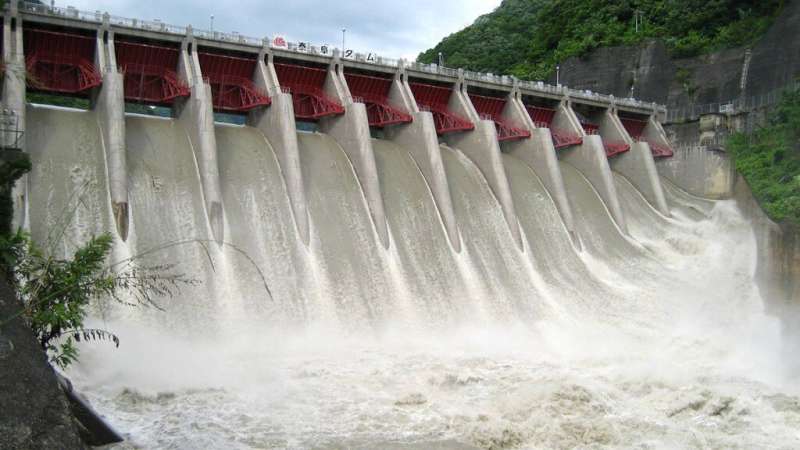How we're reshaping global water storage

Globally, humans use about 4 trillion cubic meters of fresh water each year for everything from crop irrigation to cooling manufacturing equipment to generating electricity. In a recent study published in Earth's Future, Kåresdotter et al. modeled how our unquenchable demand for water affects four hydrological variables: runoff, evapotranspiration, soil moisture, and total water storage.
The researchers considered human water use with respect to eight objects and processes: interbasin transfers (systems that move water between river basins), dams, reservoirs, impervious surfaces such as roads, domestic and industrial water demand, livestock water demand, irrigated agriculture, and water "mining" (extracting groundwater for irrigation). They found that these eight factors alter all four hydrological variables, but different areas of the world experience different directions and magnitudes of change.
In tropical and temperate regions, for example, human activity increases water runoff and evapotranspiration, leading the researchers to conclude that humans dramatically influence the amount of water stored in Earth in these regions. On the other hand, humans have a relatively small impact on hydrological cycles in dry areas such as central and West Africa. The researchers conclude that although human activity increases surface water storage somewhat in many parts of the world—a finding at odds with some previous work—this activity is decreasing overall global water storage, with the largest decreases occurring in tropical regions.
Population levels and dams emerged in the study as two factors with outsized influence on hydrology. Not all dams affected the same hydrological parameters, however. The researchers found that hydroelectric dams primarily increase Earth's total water storage, whereas irrigation dams primarily increase soil moisture.
The work comes with a caveat: The authors assumed the climate would remain the same if human influences were removed, possibly explaining the discrepancy between their results and others'. Future work could assess the validity of this assumption and perhaps incorporate human-induced climate variation into models. The researchers say they hope their work provides a step toward sustainable water management planning.
More information: Elisie Kåresdotter et al, Distinguishing Direct Human‐Driven Effects on the Global Terrestrial Water Cycle, Earth's Future (2022). DOI: 10.1029/2022EF002848
Journal information: Earth's Future
Provided by American Geophysical Union
This story is republished courtesy of Eos, hosted by the American Geophysical Union. Read the original story here.




















